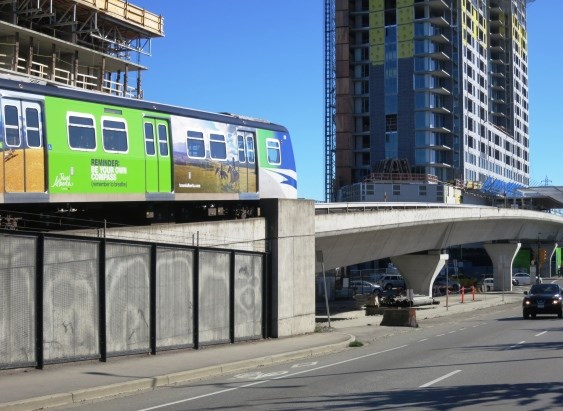To the editor:
Re: “Mayors’ Council may expect Vancouver to fund Broadway line,” Sept. 24.
The punchline in Michael Geller’s op-ed piece on the Broadway subway has everything to do with political bias and little to do with transit planning.
He builds his case on a report on regional transportation and population growth that incongruously narrows its focus only when addressing Vancouver, and chisels off the city’s central role and connectivity to the region.
Taken to its logical conclusion, if Vancouver is forced to pay an extra $500 million for a subway arbitrarily determined by others to be cosmetic, then the city could justifiably place a surcharge on Broadway Corridor transit fares to pay for it, the majority of which originate outside its boundaries. Like that will go down well.
Geller issued the canard that, south of the Fraser, cities will receive “a large percentage” of the projected population growth and should, by extension, be first in line for new transit assets if they vote correctly. This is not analysis. Bedroom communities experience weaker economic performance until they change their zoning policies to lessen their reliance on the stronger gravitational pull of denser, more economically diverse neighbouring cities, like Vancouver.
The Broadway-UBC Corridor has outperformed every town centre outside of downtown (most of them SkyTrain-linked) by orders of magnitude in every measure for decades (notably employment density), but has never received an adequate transportation investment.
South of Fraser communities have already received $7 billion in freeways and bridges — and another $3 billion megabridge is on the books — paid for by the region (including Vancouver taxpayers) and the province only to keep their car dependency wheels rotating. Why shouldn’t the vital Broadway Corridor have a subway at less than one third the cost and arguably better economic return, energy efficiency and environmental, urban and social utility?
Transit should be apportioned fairly throughout the region in accordance with need and site conditions, not by the dictates of a political agenda, a one-step evaluation or myopic preconceptions about mode. While capital cost is important, other metrics like frequency and speed, cost per trip, risk assessment, urban design response and value return over the product life provide far better quality information, refinement and nuance for decision-making on projects that will exist in excess of 100 years.
In most advanced cities subways are often justified in the dense urban core where land is at a premium, and surface rail is well-adapted to less dense suburbs, with buses feeding both and pedestrians taking precedence over everything. The urban transit toolkit needs to be well-stocked and judiciously used.
Broadway is a corridor with exceedingly high regional importance, but Geller set it up as a red herring to score a quick, low-value political point for his party. He needn’t be concerned that the next mayor must be “Harper friendly.” Today’s politicos will be long forgotten by the subway users of the 22nd Century in a metropolis of seven million people.
Meredith Botta,
Vancouver



